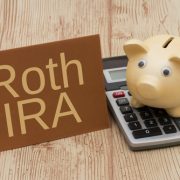What Are the Advantages of a Self-Directed Roth IRA?
Using a Roth IRA comes with lots of advantages. But what if you use a Self-Directed Roth IRA? Does it open up even more advantages? To examine the answers to these questions, we will first look at the structure of a Roth IRA, who it might be suited for, and then explain how Self-Directing can open up a whole new world of investing for many.
The Roth IRA: Why So Many Investors Use It
For many personal finance experts, the Roth IRA is the first place they put retirement money after employee matching. But for many people, employee matching is not an option. That means that the Roth IRA is often the first option for self-employed individuals and contractors, for example. The reason people prioritize Roth IRAs so much? Because the contributions are after-tax contributions. This means that investors cannot deduct this money from their tax return, but the money does grow in a Roth IRA tax-free. Then, upon retirement, an investor can take tax-free distributions from the Roth IRA, thanks to the fact that this money’s initial investment had been taxed.
In other words, Roth IRAs make it possible to front-load the paying of your taxes on this money. If you make wise investments within the Roth IRA, that means that you can enjoy a vast amount of wealth within the Roth IRA that does not then require taxes on the distributions.
The main limitation of the Roth IRA is that it has relatively low contribution limits. If you’re an aggressive retirement investor, that means that you can quickly run out of contributions to make in the IRA, and if you want to invest more into tax-protected accounts, you’re going to have to turn to something else.
What About a Self-Directed Roth IRA?
Given what you know about the Roth IRA, what could a Self-Directed IRA have to offer beyond that? The good news is that a Self-Directed Roth IRA is just that: a Roth IRA. It does not have any quirky rules that do not apply to any other Roth IRA. It is simply the way in which you approach this Roth IRA that will be different.
Because the IRS mainly outlines the types of investments that retirement investors cannot purchase through an IRA, there are lots of options for anyone who chooses to Self-Directed their Roth IRA. For instance, you can purchase real estate within a Self-Directed Roth IRA, so long as this real estate does not violate any rules. One such rule would be to avoid transacting with a disqualified person, such as a spouse or a family member. In the case of real estate, you would not use your Roth IRA to purchase real estate from a disqualified person, nor would you rent the property out to them.
There are other retirement investment assets that can be held through a Self-Directed Roth IRA, such as precious metals, tax liens, Single Member LLCs, and more. These assets make it possible to accomplish a range of different retirement strategies. For example, someone who wants to incorporate precious metals into their retirement strategies can make sure that they do it in a specific way by working through a Self-Directed IRA administration firm.
Working with a Self-Directed IRA administration firm means that investors will have not only the freedom to handle all of these different investments, but the custodian necessary to administer the paperwork. This takes work out of the hands of the investor while maintaining their ownership in their own retirement strategy.
Interested in learning more about Self-Directed IRAs? Contact American IRA, LLC at 866-7500-IRA (472) for a free consultation. Download our free guides or visit us online at www.AmericanIRA.com.









